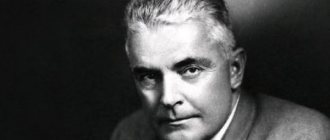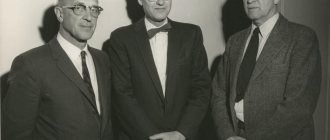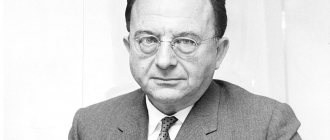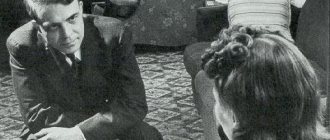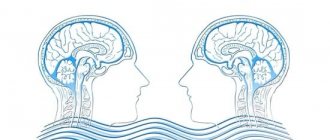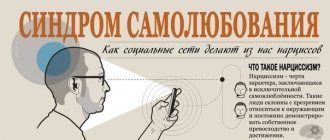Childhood
John Watson (1878–1958) was born in South Carolina, in the small town of Travelers Rest. His father, Pikens Watson, led a riotous lifestyle, which is why there were constant discords and scandals in the house. This led to the fact that 13 years after the birth of his son, his dad left the family. As a result, the boy was left with deep emotional trauma. His mother Emma was very religious by nature, which led to strict methods of raising the child, as well as an almost complete lack of freedom to choose further guidelines. And if John Watson had not lost his mother at the age of 22, it is quite possible that the world would not have heard of such an outstanding psychologist, since she passionately desired a career as a priest for her son.
John Watson: businessman and great psychologist
John Watson was born on January 9, 1878. Emma and Pikens Watson - John's parents - lived in Southern California, in the small town of Travelers Rest. The mother was very religious, so the boy’s life was full of restrictions and prohibitions. Pikens himself preferred a rather wild life; scandals on this basis led to his father leaving the family in 1891, when the boy was 13 years old. John was attached to his father, so he took the separation hard and could not forgive him for this until the end of his life. The teenage period after his father left was quite turbulent; his biography includes arrests for fights and shooting within the city. He came to his senses in 1894, when he entered Furman Baptist University in Greenville to study philosophy in order to satisfy his mother’s desire to become a priest. However, his passion for science overpowered his obligations, and, having received a master's degree in 1900, John Watson continued his studies, but at the University of Chicago. Three years later, in 1903, John Watson received his doctorate in experimental psychology, becoming the university's youngest doctor. Here he remained to work as an assistant, later becoming a teacher. He also met his future wife, Mary Ickes, at the university. She was a student. They had two children, Mary and John. However, the flighty John Watson with his hobbies ruined not only his career, losing his teaching position, but also worsened his relationship with his wife. In 1908, John Watson accepted an offer to head the psychological laboratory at Johns Hopkins University in Baltimore. It was here that he developed his doctrine of behaviorism (by the way, the first step in this direction was taken with his doctoral dissertation devoted to the study of the learning process in animals). John Watson concluded that behavior is easier to observe and study than human awareness and feelings. While working on his theory, John Watson did not ignore the views of I.P. Pavlov. And in 1913, “Psychology from the Point of View of a Behaviorist” was published. In this book, he describes the behaviorist's theoretical goal as predicting and controlling behavior. Watson proposed a compromise: either psychology should include facts about behavior, whether they are relevant to problems of consciousness or not, or the study of behavior should become a separate science. John Watson believed that the study of animals and humans are no different, so the same methods should be applied to the study of human behavior as to the study of animals. The main concepts of his theory were the concepts of stimulus and response, when behavior is the body’s reaction to an environmental stimulus. And since until this moment, when studying consciousness, psychologists relied only on observation, without being able to conduct experiments, then psychology, according to Watson, found itself in the position of a speculative science, unable to solve important human problems. And behaviorism fully met the requirements of natural science. John Watson believed that with the help of reinforcement, one can influence an emerging personality in order to raise a child into a desired member of society. His ideas brought him into the spotlight of the psychological community, and in 1915 he was nominated for the presidency of the American Psychological Association. The year 1919 was marked by changes in the scientist’s personal life - there was a high-profile divorce from his wife, who was tired of his constant hobbies with other women. The last straw was his interest in graduate student Rosalia Rayner, whom he married after breaking up with Mary Ickes. Two boys were born from this marriage. However, the scandal played a negative role - Watson lost his teaching position and was forced to move to New York. So in 1921 he began a career in advertising, working for the J. W. Thompson agency. The salary was high, which was undoubtedly a good help. Together with his new wife, John Watson published the book “Psychological Care of the Child,” the main methods of education in which were taken from behaviorism. Simultaneously with his commercial activities, he continued to popularize his ideas, speaking on the radio, publishing articles, and publishing books. In 1935, John Watson changed jobs, becoming the head of the advertising agency William Esty Company, where he worked for the next 10 years. It must be said that in this area, too, his behaviorist ideas found their application, prompting their creator that with the help of a certain stimulus it was possible to evoke a desired reaction in the consumer. It is enough to find the necessary incentive. And in 1945 Rosalia died. The death of his wife greatly affected Watson, and he again radically changed his life, establishing his own farm in Westport, Connecticut. First here and then in Woodbury (where he moved in 1950), Watson was involved in farming and caring for livestock. At the same time, he almost completely cut himself off from people, but he did not give up his studies in science, continuing to write books. When he sensed death was imminent, John Watson collected his unpublished works and burned them. John Watson died on September 25, 1958. And although he destroyed his last works, previously published books (“Behaviourism”, “Psychology as a Science of Behavior” and others) are still popular, and the ideas of John Brodes Watson are interesting today.
Youth
After graduating from the Baptist school at Fermanagh University in 1900, he left his hometown and went to Chicago for his next education. John Watson enters the local philosophy department, but due to the specifics of teaching, he refuses his supervisor and turns his attention to psychology. Just 3 years later, he defended his doctoral dissertation on the topic of animal learning, for which he conducted numerous experiments on rats. In addition to the fact that he manages to become the youngest student in the history of the institution to receive an academic degree, he is also the first to devote such large-scale work to experiments on these particular rodents. This moment determined the directions of John's future activities and outlined the boundaries of future research.
Behaviorism
Two years after becoming a doctor of science, John Brodes Watson received an invitation to head the department of experimental psychology at the University of Baltimore. He willingly agrees, thereby opening up more and more opportunities for immersion in his own research and experiments. This period of his life is associated with the development of the concept thanks to which the name of the scientist entered the annals of history. He becomes the author and follower of the theory of behaviorism, which he describes in detail in his manifesto entitled "Psychology from the Behaviorist's Point of View." He read it publicly on February 24, 1913, a day that can rightfully be considered the birth of this movement. Watson declares to the world that psychology is rather an objective science belonging to the field of natural science. He criticizes its modern position and significance, saying that its study is mistakenly based on the inner world of a person, his thoughts and feelings. Whereas it would be correct to focus on external behavior, as well as data that can be confirmed experimentally.
Criticism of the experiment and the fate of “Albert”
The experiment allowed Watson to conclude that reactions of fear, anxiety, phobia and antipathy are formed in people in childhood. But he was unable to rid the baby of his unaccountable fear of white rats, rabbits and objects with white fur. What was the fate of little Albert next? According to some sources, he was adopted, according to others, he left with his mother, but Watson’s experiment, despite the benefits of his discovery for psychology, was severely criticized.
Despite the fact that the experiment with little Albert is famous in psychology and is included in all classical textbooks, it was criticized for two reasons:
- Unethical. In our time, such an experiment could not be repeated.
- Subjectivity. The experiment was carried out with process violations, in the absence of a clear plan. In many ways, the researchers relied on their own interpretations; in addition, the fate of the experimental subject was not followed up further. It was also known that Watson interfered with the experiment, preventing the baby from using any protective behavior, and also contributed to the formation of fear. For example, if a child began to suck his thumb, Watson would remove the finger from his mouth.
The fate of baby Albert remained a mystery for a long time. They said that he grew up to be a strange man, afraid of white fluffy objects all his life. Only recently was it possible to learn more about him. A group of American psychologists led by Hall P. Beck spent 7 years researching this experiment. By studying the geography of the experiment and information about the identity of the boy’s mother, they were able to find out the child’s real name – Douglas Merritt. He died at the age of 6 on May 10, 1925 from hydrocephalus. According to the author of the study, it lasted longer than the life of the child himself. In 2012, Hall P. Back and Alan J. Fridlund made a stunning announcement. It turns out that baby Albert was not at all a healthy, normal child, as Watson stated in his description of his research in 1920. They provided compelling evidence that Watson knew about the baby's illness and deliberately hid this fact. Unfortunately, this new information not only casts doubt on the reliability of the experiment, which is included in all classic psychology textbooks, but also makes it even more unethical and cruel.
A logical question arises: but why?! Why was it necessary for a respected, successful person, who had achieved a lot by the age of 40, to commit such a stupid act - falsifying the initial data of an experiment, unethical experiment... Has he lost criticality to his actions, driven by a passion for science, or is another kind of passion involved - for assistant Rosalie, who may have influenced Watson and his aspirations? Alas, we are unlikely to ever know.
Editor: Chekardina Elizaveta Yurievna
List of used literature:
- Furman University website. Section dedicated to the life and work of John Watson -
- Watson J. “Psychology from a behaviorist’s point of view,” Reader on the History of Psychology. Ed. Galperina P. Ya., Zhdan A. N. M.: Moscow State University Publishing House, 1980. P. 17-18.
- Watson J. “Psychology as the science of behavior.” - M., "AST-LTD", 1998
- Fridlund, A. J., Beck, H. P., Goldie, W. D., & Irons, G. (2012). Little Albert: A neurologically impaired child. History of Psychology. doi: 10.1037/a0026720
- “Conditioned Emotional Reactions,” by John Watson and Rosalie Rayner, The Journal of Experimental Psychology, February 1920
- To write or not to write? - that is the question https://psychosearch.ru/7reasonstowrite
- How to become a partner of PsychoPoisk magazine? https://psychosearch.ru/onas
- Several ways to support PsychoSearch https://psychosearch.ru/donate
Scientific career
Thanks to the novelty of the theory and its subsequent development, John Watson is at the pinnacle of greatness in scientific circles. His salary doubles, his research laboratory increases in size, and there is no end to students wanting to attend lectures. In 1915, he was appointed president of the American Psychological Association. These years can be called the heyday of behaviorism. The publications of the famous scientist appear every now and then in various publications, and 2 scientific journals are published under his editorship. In 1914, his bibliography was replenished with a very significant work, “Behavior: An Introduction to Comparative Psychology,” in which consciousness as a subject of psychology is completely rejected. His theories also gain practical application, and Watson himself masters the art of managing human behavior.
History of development
As we have already said, the American psychologist John Watson is considered the founder of behaviorism. He sought to make psychology a more accurate and objective science, studying the properties of the psyche using strict scientific methods. In doing so, he was guided by the work of Ivan Pavlov , who can be considered the predecessor of the theory of behaviorism. It was his studies of conditioned and unconditioned reflexes that formed the basis of this direction.
Watson voiced the fundamental idea of behaviorism: a stimulus provokes a response. Thus, the behavior of each person always depends on external stimuli and how he perceives them. He was confident that his teaching in the future would make every person useful to society and in demand, regardless of innate talents and basic prerequisites.
Subsequently, the baton was picked up by the American psychologist Burres Skinner, who became the main popularizer of the behavioral theory of the 20th century. He developed a large number of research techniques that allow him to analyze behavior, identify patterns in it and compare it with certain external factors. Skinner made a huge contribution not only to the development of behaviorism, but also to its popularization. He positioned this area of psychology as a tool that would transform society, improve the quality of life and cultural level.
The American psychologist Edward Thorndike also made a significant contribution to the development of the scientific field. Subsequently, his developments made it possible to significantly supplement and improve the general theory of behaviorism, but they did not fall into the classical concept, since they took into account the subjective and physiological characteristics of a person. In particular, Thorndike believed that the starting point for the formation of a reaction is not just a stimulus, but a certain situation that evokes a response in a person - positive or negative. In this case, the person reacts, and if the stimulus is indifferent to him, then no reaction will follow.
Personal life
While teaching at the university, the founder of behaviorism married his student Mary Ickes. Despite the fact that the couple had two children, their marriage could not be called successful. In 1920, the scientist’s next infatuation with a young graduate student destroyed not only his marriage, but also his entire successful career that he had been building for so many years. The wife discovered evidence of her husband's romantic correspondence and published it in the press, which caused a stormy scandal. From now on, there can be no talk of any teaching activity. The divorce was very loud, but despite this, Rosalia Rayner and John Watson, whose photo is presented below, immediately got married. And as a result of this marriage, which turned out to be more successful than the previous one, two more Watsons were born, both boys. Rosalia left this world early, 23 years before her husband. John took the loss hard, but still continued to work. True, in a slightly different direction.
Study of fear formation
John Watson dealt with the issue of the emergence of fears and phobias and their nature. In the process of studying, an idea came to his mind: is it possible to form fear of an object that has not previously caused it? So he decided on his ill-fated experience, which cost him his career.
The story of 9-month-old baby Albert began in 1920. According to some sources, the test subject was a child from an orphanage, and according to others, he was the son of Watson’s assistant Rosalie Rayner. The name Albert was assigned to the child by the experimenters. What his real name was, history is silent.
The object to which it was decided to induce fear was an ordinary white laboratory rat. For two months in Watson's laboratory, which was an office with two comfortable chairs and a table, the baby was shown various objects. Among them were: a white rat, a rabbit, cotton wool, a Santa Claus mask with a false beard, and other similar objects distinguished by white fur.
Two months later the experiment itself began. The child was seated on the carpet in the office and given a white rat in his hands. The baby was not afraid at all and played with the animal with pleasure. Watson then began his impact. He hit a metal plate (pipe) that was behind the baby with a hammer every time Albert touched the rat. Naturally, the child was frightened by such a sharp and unpleasant sound and began to cry. The baby soon learned the connection between touching the rat and the sound. He stopped touching the animal.
Watson and Rayner described it this way: “The moment the rat was shown, the child began to cry. Almost immediately he turned sharply to the left, fell on his left side, got up on all fours and crawled away so quickly that he was caught with difficulty at the edge of the table.”
Then Watson decided to go even further in his research. Now he placed the rat in the baby's crib and hit the plate with a hammer five times in a row. After this experience, the child began to cry at the mere sight of a white rat. Moreover, he began to be afraid of similar things that were shown to him at the very beginning: white rabbits, cotton wool, Santa's mask and generally white fur. Since there were no hammer blows when they were shown, Watson concluded that the reaction was transferred to all similar objects. This phenomenon is called behavioral transfer. In other words, the effect generalized. A week later, Watson repeated the experiment, and the reaction remained the same, including transfer to similar objects.
During his student years, he managed to work as a laboratory assistant, a janitor and even a waiter, but in the future few people cared about this, because he became known to the world as John Watson, a psychologist. The cheating scandal forced him to look for new directions for implementation, and he chooses the practical sphere of application of the acquired knowledge. To be more specific, he immerses himself in advertising. At that time, this relatively new area required detailed research in order to find out the mechanisms for controlling consumer behavior. But it was this control that occupied a central position in the psychology of the industry, so John plunges headlong into an advertising career. He starts, like anyone else, from the very bottom, in one of the New York agencies under the management of Stanley Reasor. Together with other candidates, he goes through all stages of employment, even despite his extensive knowledge and scientific merits. Over time, he liberates himself, acquires new skills and is completely immersed in the psychology of trading, applying the provisions of his theories in practice. So, he manages to rise to the rank of vice president of the company and stay in this position for several years.
Watson's legacy
Working in the advertising industry, John Watson continues to put his scientific theories into books. After his death, several more works remain for future generations of psychologists and theorists, including “Behaviourism”, “Ways of Behaviorism” and “Psychological Care of the Child”. Among his most famous followers who worked further on the theory is Burres Skinner, who, together with other colleagues, managed to popularize behaviorism. However, the concept has repeatedly been subjected to severe criticism, mostly due to the fact that it more closely resembles a tool of coercion. In subsequent years, its study began to decline, leaving behind only a set of some techniques that are still used to this day in trade, politics and other areas.
OUR PEOPLE
Yahoda, Maria Psychologists
British social psychologist of Austrian origin
Jastrow, Joseph Psychologists
American psychologist
Yaroshevsky, Mikhail Grigorievich Psychologists
Soviet and Russian psychologist, historian of science, specialist in the history of science, psycholinguistics, theory and methodology of psychology, psychology of creativity
Justin, Eva Psychologists
German psychologist and famous racial anthropologist of Nazi Germany, is one of the main initiators of the Roma genocide in Germany
Jung, Carl Gustav Psychologists
analytical psychology
Etkind, Alexander Markovich Psychologists
Soviet psychologist, later British and American cultural historian, cultural historian and literary critic
Erikson, Eric Homburger Psychologists
Homburger Erikson was a developmental psychologist and psychoanalyst.
Angell, James Psychologists
American psychologist and teacher, student of John Dewey, one of the leaders of the American branch of functional psychology
Last years of life and death
A few years after the death of his wife, a former teacher decides to leave the advertising business and settle on a quiet farm. There John Watson lives out his last days. The biography of his life ends in 1958. A few months earlier, the association of which he had once been president had included him in its list of honorary members. However, this did not help him forget the resentment that he was once deprived of his favorite job and the right to occupy certain positions, so in the same year in which he left this world, he starts a fire in the yard, giving away numerous scientific works to the flames. This becomes the last echo of any activity of Watson, but this act did not affect his reputation, because it was Watson’s contribution to psychology that made him one of the most outstanding scientists of the last century.
Student scandal: unpopular version of Watson's resignation
Few people know that the official reason for Watson’s resignation was not the infamous experiment, but a public scandal that erupted due to an affair with his research assistant, Rosalie Rayner, who participated in that very experiment. This scandal resulted in his divorce from his wife, Mary Ickes. She somehow managed to intercept her husband’s correspondence with his mistress, after which the angry Mary published it in the local newspaper. The story received wide publicity and affected many of the Hopkins University administration, so Watson was asked to leave his post of his own free will. Which he did, subsequently marrying Rosalie.
Watson was upset by his forced retirement from academic psychology, but then went into another field: he went into advertising, studying the reasons that motivate people to buy. He also spoke on the radio and published his articles in women's magazines, actively promoting the ideas of behavioral psychology. Together with his wife Rosalie, he lived on a farm, was fond of horse riding, and loved to boat. However, at the age of 35, Rosalie died from a sudden illness. It was a hard blow for Watson. After burying his wife, he moved to a small farm in Woodberry, Connecticut, where he lived until his death in 1958.

